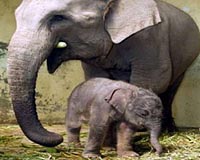| . |  |
. |
San Antonio TX (SPX) Jul 06, 2009 Scientists from Texas are batty over a new discovery which could lead to the single most important medical breakthrough in human history - significantly longer lifespans. The discovery, featured on the cover of the July 2009 print issue of The FASEB Journal, shows that proper protein folding over time in long-lived bats explains why they live significantly longer than other mammals of comparable size, such as mice. "Ultimately we are trying to discover what underlying mechanisms allow for some animal species to live a very long time with the hope that we might be able to develop therapies that allow people to age more slowly," said Asish Chaudhuri, Professor of Biochemistry, VA Medical Center, San Antonio, Texas and the senior researcher involved in the work. Asish and colleagues made their discovery by extracting proteins from the livers of two long-lived bat species (Tadarida brasiliensis and Myotis velifer) and young adult mice and exposed them to chemicals known to cause protein misfolding. After examining the proteins, the scientists found that the bat proteins exhibited less damage than those of the mice, indicating that bats have a mechanism for maintaining proper structure under extreme stress. "Maybe Juan Ponce De Leon wasn't too far off the mark when he searched Florida for the Fountain of Youth," said Gerald Weissmann, M.D., Editor-in-Chief of The FASEB Journal. "As it turns out, one of these bat species lives out its long life in Florida. Since bats are rodents with wings, this chemical clue as to why bats beat out mice in the aging game should point scientists to the source of this elusive fountain." Share This Article With Planet Earth
Related Links Federation of American Societies for Experimental Biology Darwin Today At TerraDaily.com
 Another endangered elephant dies in Indonesia: WWF
Another endangered elephant dies in Indonesia: WWFJakarta (AFP) July 2, 2009 An elephant calf has starved to death in Indonesia, the eighth endangered Sumatran elephant to have died in the wild since May, environmental group WWF said Thursday. WWF spokeswoman Syamsidar said the calf was believed to be the offspring of an elephant which was poisoned to death recently in the latest sign of growing conflict between animals and people over land and forest resources. ... read more |
|
| The content herein, unless otherwise known to be public domain, are Copyright 1995-2009 - SpaceDaily. AFP and UPI Wire Stories are copyright Agence France-Presse and United Press International. ESA Portal Reports are copyright European Space Agency. All NASA sourced material is public domain. Additional copyrights may apply in whole or part to other bona fide parties. Advertising does not imply endorsement,agreement or approval of any opinions, statements or information provided by SpaceDaily on any Web page published or hosted by SpaceDaily. Privacy Statement |